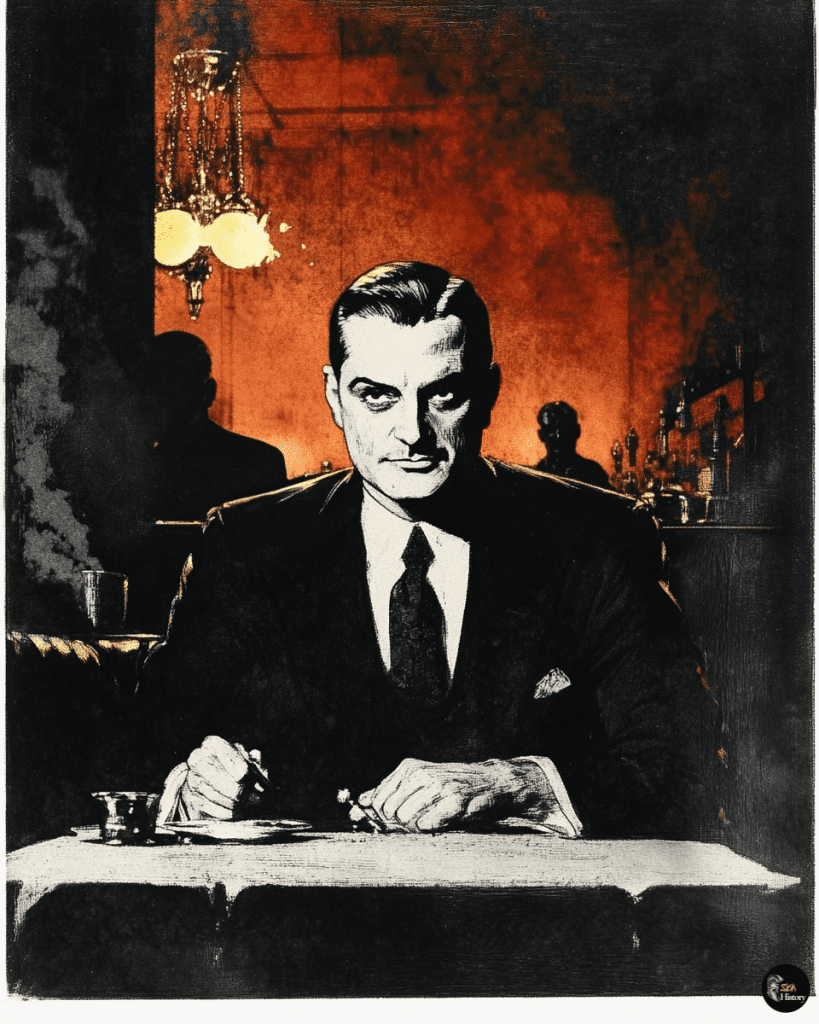In the sweltering summer of 1930, New York City was gripped by a mystery that would captivate the nation for decades. Judge Joseph Force Crater, a prominent figure in the New York Supreme Court, vanished without a trace on August 6th. His disappearance occurred amidst swirling rumors of political corruption and mob connections, casting a shadow over the city’s power structures.
The disappearance of Judge Crater became one of the most infamous unsolved cases in American history.
As investigators delved into Crater’s background, they uncovered a complex web of political ties, questionable financial dealings, and potential links to organized crime.
The case exposed the underbelly of 1930s New York, revealing the entrenched corruption within the city’s political machine.
Judge Crater’s mysterious vanishing act became emblematic of an era marked by political scandals, Depression-era crime, and the pervasive influence of the mob.
Despite an extensive investigation that generated over 16,000 leads, the true fate of Joseph Force Crater remains unknown to this day, leaving behind a legacy of speculation and intrigue.
The Enigmatic Vanishing of Judge Crater
The disappearance of Judge Joseph Force Crater in 1930 remains one of New York City’s most intriguing unsolved mysteries. This case captivated the public imagination, intertwining themes of political corruption, organized crime, and personal scandal.
Joseph Force Crater’s Sudden Disappearance
On August 6, 1930, Judge Joseph Force Crater vanished without a trace in New York City. The 41-year-old New York State Supreme Court Justice was last seen leaving Billy’s Chophouse, a popular Manhattan restaurant. Crater had dined with a friend and a showgirl before allegedly entering a taxi, never to be seen again.
The judge’s disappearance occurred during a time of heightened scrutiny into corruption within New York’s judicial system. Crater had recently been appointed to the bench by Governor Franklin D. Roosevelt, raising questions about potential connections to Tammany Hall, the city’s notorious political machine.
Investigation into the Missing Judge Case
The search for Judge Crater became one of the most extensive missing persons investigations in New York’s history. Police interviewed thousands of witnesses and followed up on countless leads, but to no avail. The case garnered immense media attention, earning Crater the moniker “the missingest man in New York.”
Theories about Crater’s fate ranged from mob-related foul play to voluntary disappearance. Some speculated he had been eliminated due to knowledge of corrupt practices, while others suggested he might have absconded with ill-gotten gains.
Despite the efforts of law enforcement, the case remained unsolved for decades.
Stella Crater’s Role and Challenges
Stella Crater, the judge’s wife, was thrust into the spotlight following her husband’s disappearance. She initially cooperated with authorities but later became frustrated with the lack of progress in the investigation.
For years, Stella maintained hope that her husband would be found alive. She faced numerous challenges, including financial difficulties and public scrutiny. In 1939, Stella had Joseph legally declared dead, allowing her to collect on his life insurance policy.
Stella Crater continued to search for answers throughout her life. In 2005, new information emerged suggesting Judge Crater had been murdered and buried under the Coney Island boardwalk. However, this lead, like many before it, failed to provide definitive closure to the enigmatic case of the vanishing judge.
Corruption and Intrigue in 1930s New York
The disappearance of Judge Joseph Force Crater unfolded against a backdrop of widespread corruption and political scandal in 1930s New York. This era was marked by the powerful influence of Tammany Hall, a tarnished judicial system, and the looming presence of organized crime.
Political Corruption and Tammany Hall Scandals
Tammany Hall, the Democratic Party political machine, wielded enormous influence over New York City politics in the early 20th century. The organization was notorious for its patronage system and corrupt practices, which extended to the appointment of judges like Joseph Force Crater.
Crater’s rise to the New York Supreme Court was facilitated by his connections to Tammany Hall. The political machine’s influence reached far beyond the courtroom, permeating city contracts, law enforcement, and local businesses.
Rumors swirled about kickbacks, bribery, and vote-buying schemes orchestrated by Tammany Hall officials. These allegations cast a shadow over Crater’s appointment and subsequent disappearance, fueling speculation about potential links between political corruption and his vanishing act.
New York Supreme Court’s Tarnished Reputation
The New York Supreme Court, where Judge Crater served, was not immune to the corruption plaguing the city. Allegations of judicial misconduct and improper influence were rampant during this period.
Judges were often appointed based on political connections rather than merit, raising questions about their impartiality and integrity. Crater’s appointment came under scrutiny, with suspicions that he may have paid for his position.
Rumors of judges accepting bribes or ruling in favor of politically connected individuals further tarnished the court’s reputation. This atmosphere of mistrust and impropriety cast doubt on the entire judicial system’s ability to deliver justice.
The Underworld’s Hand in the Case
Organized crime flourished in 1930s New York, with mobsters exerting influence over various aspects of city life.
The underworld’s potential involvement in Judge Crater’s disappearance added another layer of intrigue to the case.
Speculation arose about Crater’s possible connections to mob figures or his knowledge of criminal activities.
Some theories suggest he may have been silenced to prevent him from exposing illegal operations.
The judge’s last known whereabouts at Billy’s Chophouse, a popular restaurant among politicians and mobsters alike, fueled rumors of underworld involvement.
The blurred lines between politics, law enforcement, and organized crime in 1930s New York made it difficult to separate fact from fiction in the Crater case.

